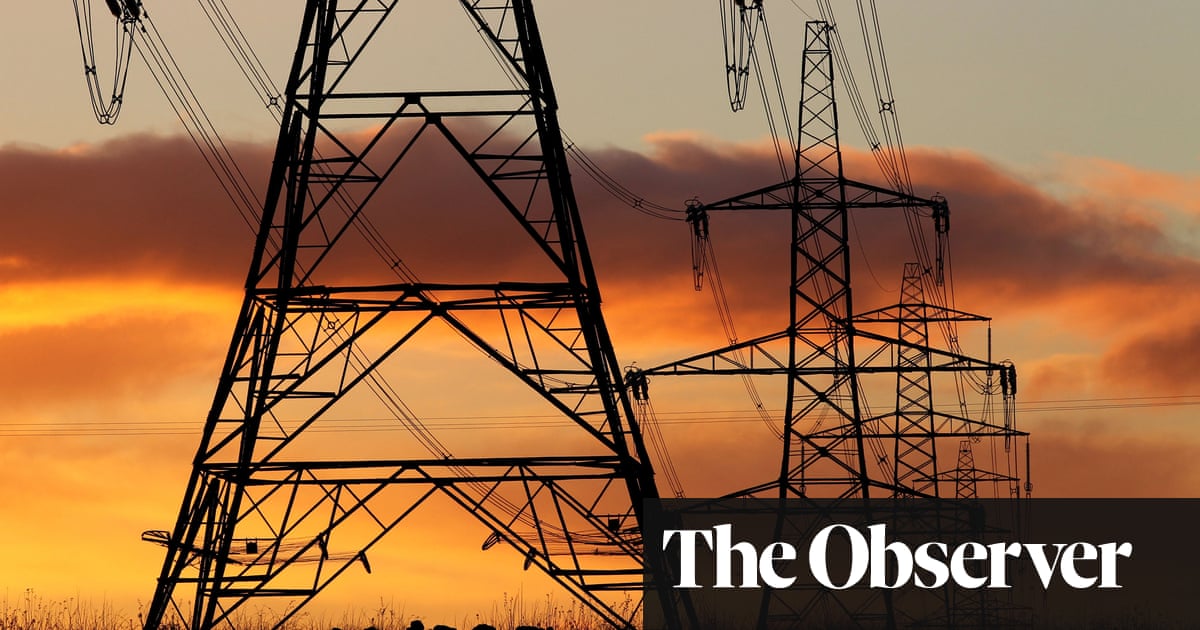Oxford has a severe housing problem. With house prices 12 times the average salary, it has become one of the least affordable cities in the country. Its council house waiting list has grown to more than 3,000 households, with many having to live in temporary accommodation.
An obvious solution is to build more homes, but those trying to do this face a big barrier: electricity.
“When I talk to developers or potential developers, one of the first questions they now ask me is about grid capacity,” says Susan Brown, leader of Oxford city council.
With housing developments competing for power against energy-hungry tech companies and the city’s increasingly electrified transport network, connection prospects are a matter of concern for housebuilders.
“The problem [for developers] is securing sufficient energy, and the time it takes to connect to the grid,” Brown says.
The council estimates that 26,000 new homes will be needed in and around the city by 2040, but it fears any building plans could be delayed by capacity constraints. In the nearby market town of Bicester, this has already happened.
“The latest expansion in Bicester was supposed to see an additional 7,000 homes and a large commercial zone built, but they’ve been put on pause because grid reinforcements are needed to get them further,” says Brown, who is also a vice-chair of the District Councils’ Network, a cross-party group of 169 district and unitary councils in England. “I don’t think Oxfordshire is unique at all. I know it is becoming quite a big issue across the country.”
This inability to build enough homes is not a new problem. For the past decade, sluggish building rates have meant the government’s target of 300,000 homes a year has been repeatedly missed, while the housing crisis has worsened.
Funding and planning issues are routinely blamed for the country’s supply issues; a lack of electricity supply has rarely been given as a reason why homes are not built – until recently.
“Securing capacity has always been a priority, but over the past 18 months, it has become a significant roadblock and a real challenge for developers across the country,” says Vicki Spiers, chair of the Independent Networks Association, whose members are responsible for connecting 80% of new UK homes to the grid.
And as households move away from using fossil fuels to heat homes and power cars, the challenge will only grow.
“We can see examples of developments being knocked back because of grid capacity,” says energy expert Adam Bell of Stonehaven Consulting. “That problem will only get worse in the future without expansion of the distribution network.”
Just like the capacity issues facing housing developments, the country’s electricity system is complex, and growing more so.
National Grid is responsible for the transmission network, which acts as a motorway transporting electricity from power sources to other parts of the country along high-voltage lines.
After this come 14 distribution network operators (DNOs), the equivalent of A-roads, all responsible for distribution within a region. These connect either directly to housing developments or, more often, through independent network operators.
In a country where electricity use is expected to increase by 50% by 2035, as millions of electric cars and domestic heat pumps are plugged in, the transmission network will require significant upgrades, at a cost of tens of billions of pounds. But it is at the distribution level, the A-roads, that the biggest roadblocks come for housing developments.
The operators are often left waiting for major National Grid transmission upgrades to provide extra capacity to their network, but the five-year funding cycles set by regulator Ofgem mean local upgrade plans can become outdated as demand changes.
Bell says: “These [cycles] made sense in a slow-paced world where demand grew through economic growth and population growth, but now that we are electrifying stuff, more data centres are coming online and the view taken five years ago is going to be wrong.”
Even when upgrades or new connections are agreed on, completion can take years. Spiers says this is forcing more and more developers to mothball building projects.
The Observer has spoken to several developers who have had to scale down, change or scrap plans because of electricity capacity issues.
One developer was forced to shrink a development of more than 80 homes to fewer than 20 because it could not secure enough electricity. Another said capacity limitations meant it had had to cut the number of electric car chargers on a site.
In an extreme example, one building firm scrapped a planned development of almost 100 homes after a £570,000 charge to secure a new connection made the scheme unviable.
The most high-profile example of electricity shortages causing housing delays is in the west London boroughs of Hounslow, Hillingdon and Ealing. The area has become popular over recent years with data centre developers, thanks to the fibre optic cables that run along the M4 corridor to the Atlantic. Crucially, for an area with a large housing shortage, they have sucked up capacity that could have been used for vital housing schemes.
In 2022, the Greater London Authority sounded the alarm over the power shortages, warning that all developments in the area could be paused until 2035, when new transmission connections would be constructed.
Building of new infrastructure has now restarted and the National Grid and Scottish and Southern Electricity Network (SSEN) have come up with solutions to flatten out demand. These have included accelerating smaller housing developments, and striking deals with developers to build developments in phases to better match the extra capacity added to the network.
But while progress has been made and 7,800 homes are now connected, 3,900 planned units, including 1,855 affordable homes, are still waiting to secure a power supply.
Situations like the one in west London will become more common as the government’s Future Homes Standard legislation turbocharges the electrification of homes. The new law, which will come into force next year, will reduce the maximum permitted carbon emissions of all new homes by 75%-80%.
David Adams, strategic adviser at the Future Homes Hub (which was set up to develop a long-term delivery plan for the sector) says this will effectively ban the use of fossil fuels in homes, and make electric heat pumps the only option.
According to the National Grid electricity system operator (ESO), the body that ensures supply meets demand on the network, heat pumps will require 80 terawatt hours a year by 2050, if the country is to hit its decarbonisation goal. This is four times the current usage, but achieving this could be hampered by capacity constraints.
Last year, Reading borough council raised concerns that its net zero housing ambitions could be curtailed because of SSEN restrictions on new connections. On a planned development of more than 220 homes with heat pumps, nearly two-thirds converted back to gas after capacity concerns were raised.
“We had a developer that was willing to fit air source heat pumps, fit electric car chargers, but couldn’t get the capacity, and had to come back to planning so it could fit gas boilers,” says Micky Leng, the council’s planning lead. “This is a massive issue that has the potential to put the country’s race to net zero at risk.”
The Energy Network Association, the body that represents district network operators, says connection issues are rare for housing projects, but where they do occur operators are working to find solutions. It adds that in most cases connections usually take a little over a year from a request being made, and that the past year has seen its members deliver enough additional capacity to power a million homes.
But the Home Builders Federation says this is becoming a bigger issue for its members, and will only get worse. A spokesperson says: “Moving away from gas for heating will increase electricity usage and we have seen elsewhere that if there isn’t the grid capacity, the answer is to not allow any new housing.”
Upgrading infrastructure at both National Grid and the distribution network will be key to this.
Adams at the Future Home Hub suggests that smart energy technologies could provide a solution by using existing capacity more efficiently, and that installing batteries in housing schemes could also help.
DNOs are also increasing adopting “flexibility models”, in which they buy excess energy from local generators of power, for example homes or businesses with solar panels, to increase grid supply.
For Brown, the solutions for Oxfordshire can’t come soon enough. She says: “What concerns me is that it is delaying housing, making it more expensive, and it is affecting our ability to make housing zero carbon, which is so important.”







